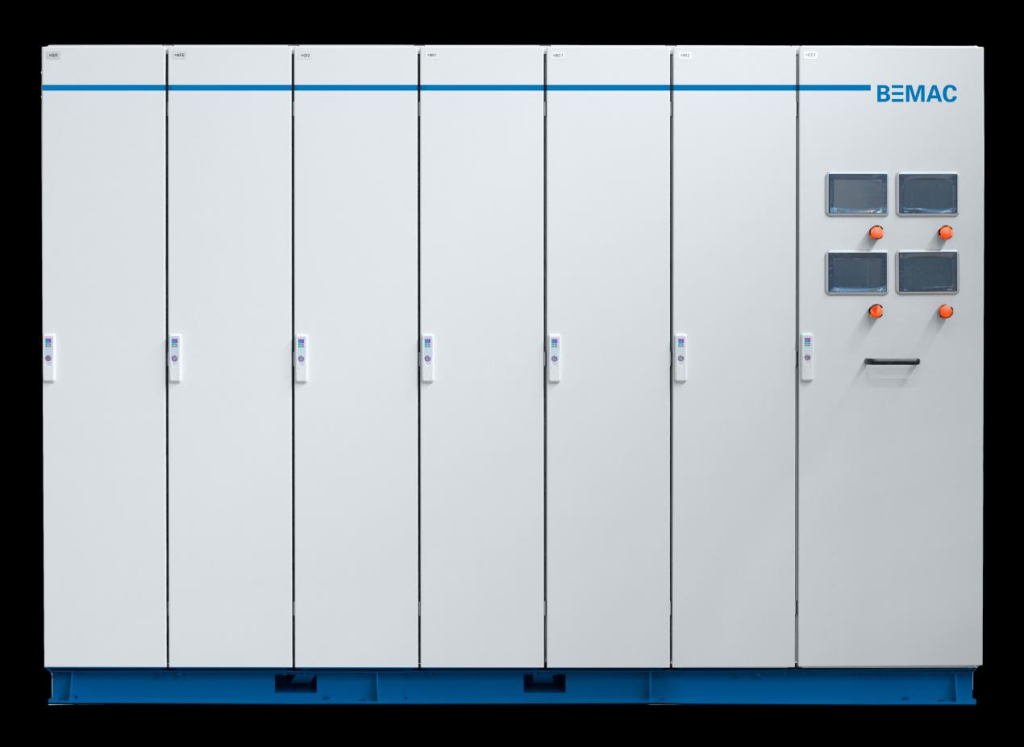
Recognizing the need for climate action, the International Maritime Organization (IMO) adapted a new strategy in 2023 to incorporate a net-zero emissions goal for all vessels by or around 2050. “With a lifetime of 20-30 years for a vessel built today, it is vital to start thinking now about how to reach these goals. 2050 isn’t that far off,” urges Asbjørn Haslebakke, CEO of Helsinki-headquartered maritime power electronics specialist The Switch, a BEMAC company.
Encouraging zero emissions
Green shipping corridors have been suggested as one key way to move toward the IMO targets – in other words, supporting zero-emission shipping on specific busy routes between major ports. The concept is that these corridors will encourage and support shipowners and cargo owners who select green vessel solutions and, at the same time, discourage or penalize those that continue to pollute.
“Such sustainable maritime highways will not only benefit deep-sea container shipping but also feeder vessels and chemical and LPG shortsea tankers as they sail from major hubs to smaller ports nearby. This would contribute to zero emissions in both global and regional shipping, and not least pave the way for a more sustainable future for our children and grandchildren,” says Haslebakke.
Advisory giant McKinsey has collaborated with the Mærsk Mc-Kinney Møller Center for Zero Carbon Shipping in Copenhagen to create a blueprint to help stakeholders assess the feasibility of green corridor projects. They have studied three different alternatives:
- Single-point harbour or port hubs that allow round-trip zero-emission bunkering
- Point-to-point transport corridors between two harbours with zero-emission bunkering at both ends
- Network corridors between three or more harbours that all support zero-emission bunkering
“One corridor being suggested for deepsea shipping is the main-haul container route from Asia to Europe. According to McKinsey, approximately 24 million 20-foot equivalent units (TEU) were traded on this route on 365 vessels in 2019. The ships burned approximately 11 million metric tons of fuel, accounting for roughly 3% of global shipping emissions – more than any other global trade. So, reducing emissions from boxships is a clear target,” says Haslebakke.

Moving forward
Ports will have to decide if they will gamble on one energy source or go for all known solutions: hydrogen, ammonia, biogas and others.
The Port of Rotterdam is a forerunner in this area, having developed an extremely interesting concept that includes:
- Development of green power and a bigger electric grid
- Development of plants for producing and transporting hydrogen
- Transport and bunkering of any green fuel
- Transport and storage of CO2
- Shore-based power for docked vessels
- Transport of residual heat for commercial and residential use
For the immediate future, the industry needs to look at single-port solutions. Point-to-point and network solutions are more challenging to achieve. Both require different governments and port authorities/operators to agree on the green corridor and then on what type of fuel they will use and how to bunker it. “In the long term, the major ports of the world need to agree on the goals. If a vessel needs green ammonia to be able to run on zero emissions, then it must be available in the ports. Communication and discussion are needed, but action is essential; the clock is ticking,” says Haslebakke.
Consumers carry weight
Consumers are having a bigger impact on decisions and choices in this regard, than industry stakeholders may be aware of. The newly delivered, LNG-powered dual-fuel pure car truck carrier (PCTC) BYD Explorer No.1 – built to transport electric cars and leased to Chinese automaker Build Your Dreams (BYD) as the first in a fleet of eight greener car carriers – is an example of manufacturers flexing their muscles to ensure their goods are shipped in a more environmentally friendly way. Using LNG significantly reduces emissions of nitrogen oxides and sulfur oxides.
In addition, BYD Explorer No.1 is equipped with a low-resistance antifouling paint technology that can reduce fuel consumption and carbon emissions by up to 5%.
“Green corridors can become a ‘bragging tool’ for retailers and will give consumers in Europe the opportunity to choose products that may not be locally produced but have been shipped using greener transportation. The smaller vessels that carry these cars and containers from huge green ports to smaller cities like Oslo and Helsinki can also benefit from green bunkering opportunities available in the big ports,” says Haslebakke.
Future-ready vessels
Vessels ordered today will last well past the IMO’s 2050 climate target date. They must be ready for green corridors. But how can you build vessels that are ready before ports are ready? And what is the point of building zero-emission bunkering infrastructure in ports if the vessels aren’t ready? “At the very least, vessels built today must be equipped for change. Shipowners are already talking with us about finding good solutions that can be used in green corridors,” says Haslebakke.
The Switch’s shaft generators and propulsion motors are high in efficiency, enabling a vessel to run as either PTO or PTI and preparing it for the operational changes needed for any available future energy source.
“And the greenest energy is the energy you don’t use. At The Switch we have a long track record of connecting new electrical sources and energy storage on a vessel to make sure emissions and fuel consumption are reduced and transport is as green as possible,” Haslebakke says.
The Switch DC-Hubs are ready for all loads and electric energy sources, whether the selection is ammonia, hydrogen or something else. The Switch DC-Hub, in combination with batteries, perfectly supports vessels toward zero emissions in 2050 and even sooner. “We also have an impressive history of delivering shaft generators to both deep-sea containerships and feeder vessels, and we are ready for more,” says Haslebakke.
Winning combination
He believes the combination of the DC-Hub, batteries, fuel cells, energy-efficient propulsion or a 2-stroke engine with a shaft generator are solutions with clear benefits, especially in green corridors and for feeder ships. “This combination will far exceed the response and efficiency of solutions that have been an industry standard for too long.”
The Switch continually works with owners, ship designers and system integrators to find solutions that can be used both now and in the future. “In conclusion, I invite all interested parties to to get in touch with us to discuss this in more depth, and meanwhile I’m rooting for the first green corridors to go live as soon as humanly possible. The technology is there to make it happen,” says Haslebakke.
About The Switch (a BEMAC company)
The Switch focuses on electrifying the world with game-changing green technologies. Our innovative electrical drive train products, capabilities and solutions convert energy sustainably, store energy effectively and consume energy responsibly. Today, we have over 16 GW of megawatt-class environmental energy technology delivered for leading energy pioneers throughout the world. We’re on a mission to enable more profitable power generation, energy storage and energy use while lowering the cost of electricity, operations and emissions. For more information, visit: www.theswitch.com





